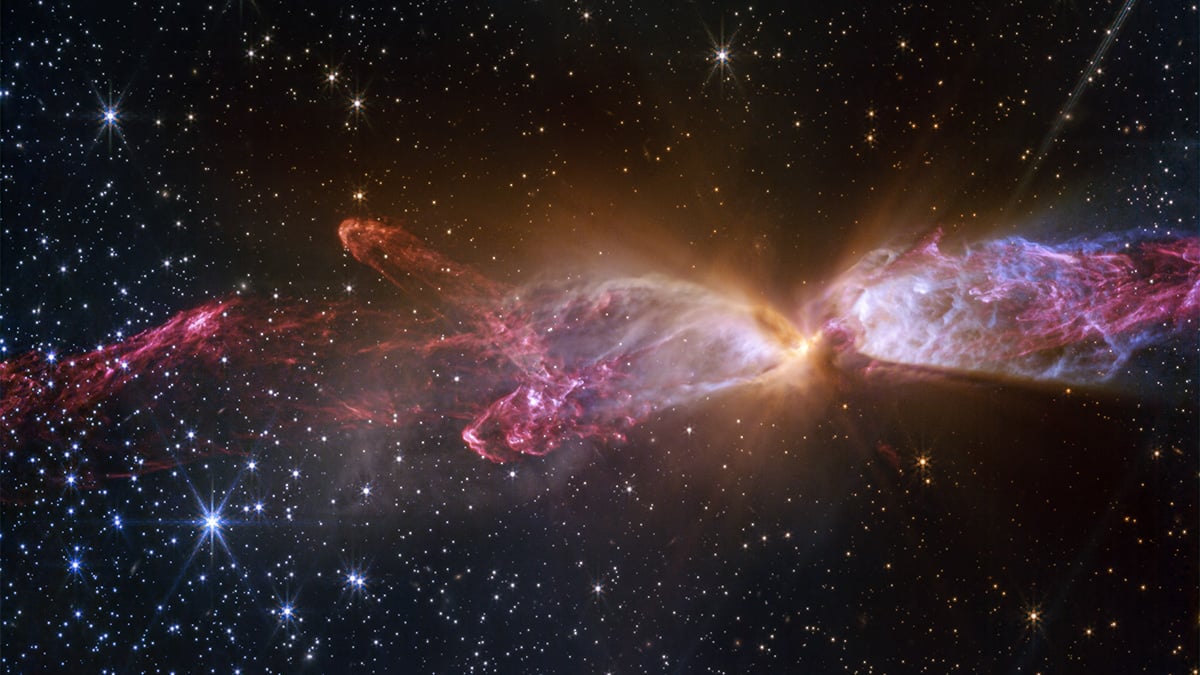
NASA’s James Webb Space Telescope (JWST) has captured an extraordinary new image of Lynds 483 (L483), a dark molecular cloud located approximately 650 light-years away in the constellation Serpens. This high-resolution infrared observation reveals intricate details of the star formation process, offering valuable insights into the early stages of stellar evolution.
Anatomy of Lynds 483
At the heart of Lynds 483 lies a pair of protostars deeply embedded within a dense, opaque disk of gas and dust. This disk, visible as a dark horizontal band in the JWST image, obscures the young stars from direct view. However, their energetic activity is dramatically visible in the form of powerful bipolar outflows, shaping the surrounding nebula into a striking hourglass structure.
The upper lobe of this formation glows in shades of orange and purple, while the lower lobe appears more subdued in blue and pink. These colors correspond to different infrared wavelengths, highlighting variations in temperature, density, and chemical composition within the expanding gas.
Dynamic Interactions and Molecular Complexity
Over tens of thousands of years, the central protostars have expelled gas and dust in both high-speed jets and slower outflows. When newer ejecta collide with older material, they create turbulent, crumpled structures that twist and swirl, depending on the densities involved.
These interactions foster the formation of complex organic molecules such as carbon monoxide and methanol, providing critical clues about the chemical evolution of young stellar systems.
Significance of JWST’s Observations
The unprecedented resolution and sensitivity of JWST allow astronomers to study star-forming regions like L483 with remarkable clarity. By analyzing the structures, outflows, and molecular compositions revealed in this image, scientists can gain deeper insights into:
- How protostars accumulate material and evolve
- The role of turbulence and magnetic fields in shaping star birth
- The formation of organic molecules in early stellar environments
The Future of Star Formation Research
This breathtaking JWST image of Lynds 483 underscores the telescope’s ability to uncover hidden cosmic structures, helping astronomers refine their models of stellar evolution. As JWST continues to observe protostellar nurseries, we can expect even more discoveries about the origins of stars, planets, and potentially life itself.
For an immersive experience, you can explore ESA’s interactive video pan of Lynds 483, highlighting the intricate details captured by JWST.

Clear skies!



